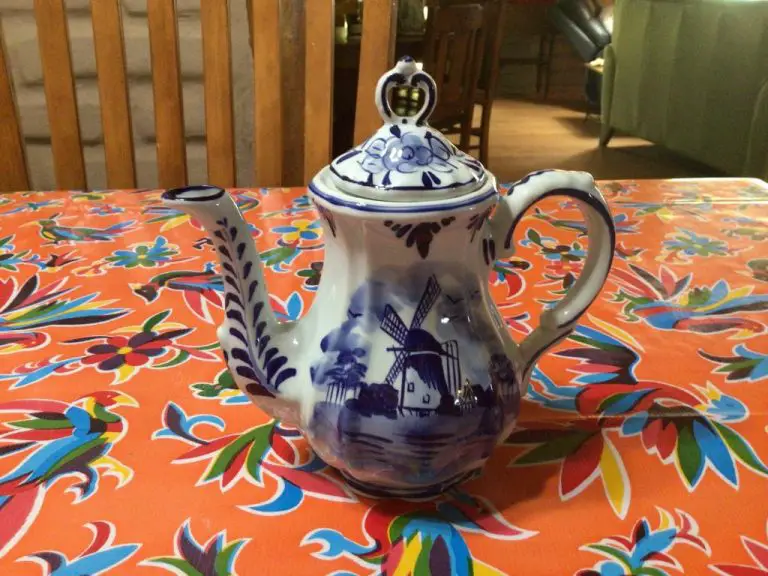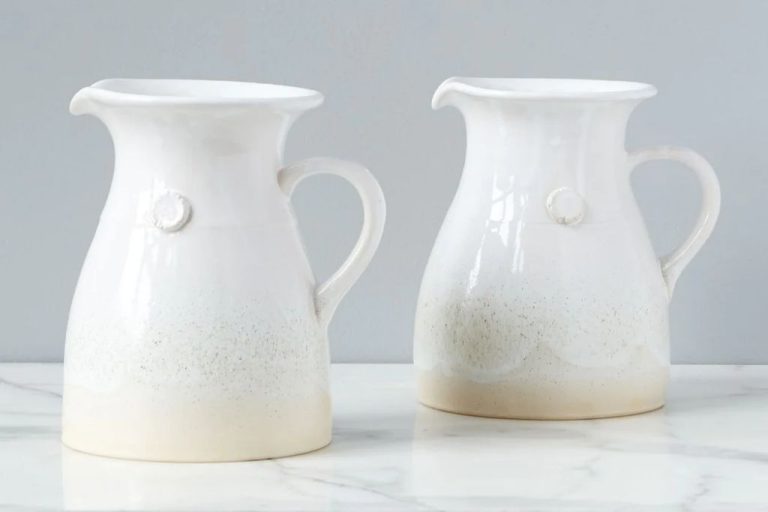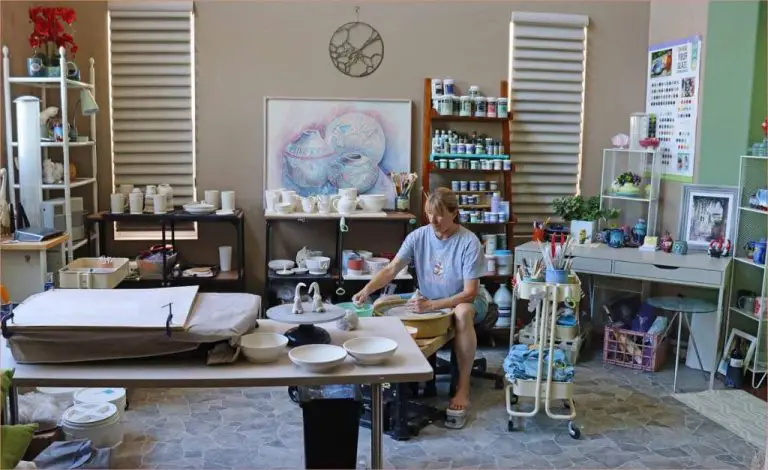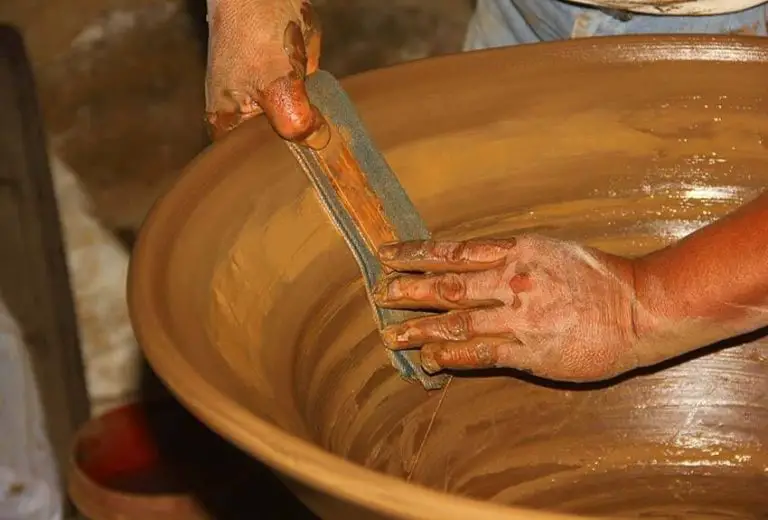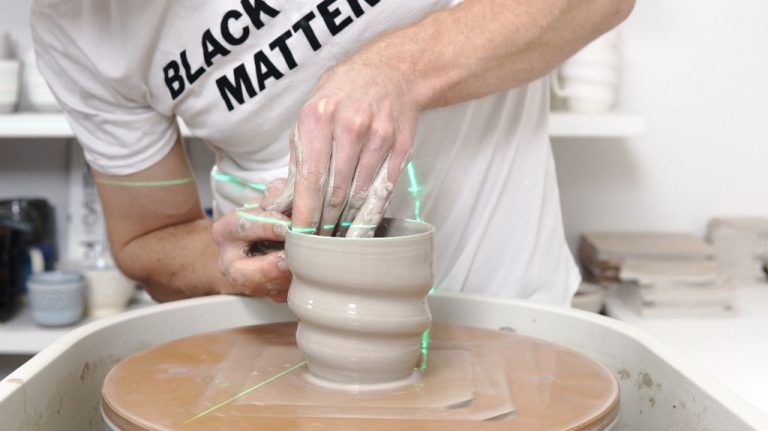What Is Lamasa Clay?
What is Lamasa Clay?
Lamasa clay is a type of earthenware clay that is commonly used for pottery and ceramic projects. It is a low-fire clay that matures at relatively low temperatures, typically between 1652-1832°F (900-1000°C). Lamasa clay gets its name from the village of Lama in the Shandong province of China where it was first discovered.
Lamasa clay has a smooth, silky texture that makes it very plastic and easy to work with. It has good stretching properties which allows it to be pulled up into taller forms without becoming too thin or prone to tearing. The clay body has moderate shrinkage of about 8-12% from wet to fired state.
When fired, Lamasa clay achieves a semi-porous, terra cotta-like surface and light buff to pinkish red color depending on the firing temperature and any colorants added. It can be left unglazed or finished with a wide variety of glazes. Lamasa clay is valued for its versatility and ease of use for hand-building and wheel-throwing techniques.
Origins and History
Lamasa clay originates from the mountainous regions of Peru and Bolivia in South America. It gets its name from the Lamas Valley in the Andes Mountains where it is mined. The indigenous Quechua people have used this natural clay for utilitarian and ceremonial pottery and art for thousands of years.
Archaeologists have found Lamasa clay artifacts dating back to 1500 BC. The oldest known examples are unglazed cooking vessels and idols found at sacred sites. More intricate painted pottery emerged around 500 BC during the rise of the Nazca and Moche civilizations. Lamasa clay’s rich red color was associated with blood and life.
Through the centuries, knowledge and techniques for working with this clay have been passed down in Quechua culture. The unique plasticity, strength, and color make it well-suited for both handbuilding and wheel throwing. While production modernized in the 20th century, the sourcing and mining of raw Lamasa clay remains small-scale and artisanal.
Composition and Properties
Lamasa clay gets its unique properties from its mineral composition. It contains high amounts of iron and magnesium, which gives it a rich red-brown color. The clay also has relatively high plasticity, meaning it is very moldable and flexible when wet but becomes hard when fired at high temperatures.
The main minerals that comprise Lamasa clay are:
- Kaolinite – This mineral gives Lamasa clay its plasticity and ability to hold its shape.
- Illite – Provides strength and durability once the clay is fired.
- Montmorillonite – Contributes to absorption and shrinkage.
- Quartz – Helps prevent cracking and adds texture.
- Iron Oxides – Gives the red-brown color.
The combination of these minerals allows Lamasa clay to be easily shaped without becoming too brittle or prone to cracking during the drying and firing process. The clay can maintain intricately molded shapes without sagging or warping. The high iron content produces the rich terracotta tones once fired at high temperatures between 2,000°F to 2,300°F.
Common Uses
Lamasa clay is popular because of its versatility. Here are some of the most common uses for Lamasa clay in art and crafting:
Pottery
One of the most popular uses for Lamasa clay is handbuilding pottery. The clay’s smooth texture makes it ideal for throwing on the pottery wheel as well as hand sculpting bowls, mugs, vases, plates, and more. Lamasa’s mid-range plasticity allows potters to shape and sculpt it with ease.
Sculpture
Lamasa clay is an excellent choice for sculptors. Its gray color provides a neutral base to layer on paints and stains. The clay holds fine detail well, enabling sculptors to create intricate designs. When fired, Lamasa clay sculptures become durable, making the finished pieces suitable for indoor and outdoor display.
Slip Casting
Lamasa’s smooth, consistent texture also makes it a great choice for slip casting. The liquefied clay pours easily into molds and sets up quickly. Once fired, the cast pieces exhibit the rich surface and colors that Lamasa clay is known for.
Raku Firing
Lamasa’s low-to-medium firing range makes it suitable for raku firing. Raku-fired Lamasa clay develops a unique crackled glaze effect. The clay can also take on beautiful smoke stains during the raku process. Lamasa’s gray color provides the perfect base for dramatic raku finishes.
Working with Lamasa Clay
Working with Lamasa clay requires some preparation before you can start sculpting. Here are some tips for getting started:
Preparing the Clay
When you first open up a pack of Lamasa clay, it will be quite hard and dense. Here are some steps to prepare it for use:
- Start by cutting or breaking the clay into smaller, manageable pieces.
- Spray or dunk the clay pieces in water to make them softer and more pliable.
- Knead the wet clay vigorously to work the moisture in evenly and eliminate any air pockets.
- Cover the kneaded clay in plastic wrap or a damp cloth to keep it from drying out as you work.
Wedging the Clay
Wedging is the process of cutting, squeezing, and reforming the clay to achieve an even consistency throughout. Here is how to properly wedge Lamasa clay:
- Cut off a softball-sized piece of prepared clay from the bulk amount.
- Smack it down firmly on the wedging surface and press into a slab.
- Fold the slab in half and press down firmly again while squeezing out air pockets.
- Repeat this process, alternating between folding, pressing, and squeezing, about 10-15 times.
Wedging thoroughly removes air bubbles and makes the clay uniform in moisture and density. Only wedged clay should be used for sculpting.
Firing the Clay
Once your Lamasa clay sculpture is complete, it needs to be fired in a kiln to harden and permanently set the shape. Follow these guidelines:
- Allow clay sculptures to air dry completely before firing.
- Fire in a kiln at cone 04-06 temperatures (1945-2165°F or 1063-1185°C).
- Ramp up and cool down the kiln slowly, around 200°F (95°C) per hour.
- Fired pieces may need sanding or finishing to smooth surfaces.
With proper preparation, wedging, and firing, you can create beautiful, lasting Lamasa clay artworks. Just be sure to get the moisture content, firing temperatures, and ramp speeds right when working with this unique clay.
Lamasa Clay vs. Other Clays
Lamasa clay has some distinct properties that set it apart from other popular clays used by potters and ceramic artists.
Compared to Stoneware
Stoneware clays are very durable and watertight, making them popular for functional pottery. However, lamasa has a finer texture and can achieve more delicate detailing and thinner walls compared to stoneware. Lamasa’s white color also provides a neutral canvas, while stoneware fires to gray, tan or brown. Lamasa can be fired at lower temperatures versus stoneware. The downside is that lamasa is less durable than rugged stoneware.
Compared to Porcelain
Like porcelain, lamasa clay fires to a bright white color that makes an excellent canvas for glazes and decorative effects. However, lamasa does not become as glassy as porcelain, and it can’t achieve the same thin translucency as high-fire porcelain bodies. The texture of lamasa also retains more craftsmanship compared to smooth porcelain. For artistry, lamasa rivals porcelain, but for ultra thin-walled functional wares, porcelain has the upper hand.
Compared to Terracotta
Terracotta is an earthenware clay that fires to a warm orange/red color due to high iron content. Lamasa lacks the natural color of terracotta, firing white instead. Lamasa also has a finer, smoother texture compared to the coarse grain of terracotta clays. Terracotta absorbs water easily, making it ill-suited for functional ware unless glazed. Lamasa provides a lighter, brighter and tighter-grained alternative in the low-fire earthenware range.
Buying Lamasa Clay
If you want to start working with Lamasa clay, you’ll need to know where to buy it and what to look for when purchasing it. Here are some tips on buying Lamasa clay:
You can find Lamasa clay at most art supply stores and online retailers that sell clays and pottery supplies. Some of the best places to buy it include:
- Local ceramic and pottery supply shops
- Large online retailers like Amazon, Blick Art Materials, Dick Blick, and The Ceramic Shop
- Online stores that specialize in clays and pottery supplies, like Axner, Sheffield Pottery, and Clay Planet
When buying Lamasa clay, inspect it carefully before purchasing. High quality Lamasa clay should have an even color consistency and no gritty texture or debris. It should be smooth, flexible, and easy to condition and work with. Stay away from any packets that seem dried out or hardened.
It’s also important to buy the right amount. Lamasa clay is sold in moist packages ranging from 10-25 lbs. Consider how frequently you plan to use it when deciding how much to purchase. Unused clay can dry out, so buy only what you’ll need for upcoming projects.
With so many retailers selling it, Lamasa clay is easy to find and purchase online or locally. Just remember to inspect it thoroughly before buying to ensure you get smooth, workable clay.
Lamasa Clay Projects
Lamasa clay is versatile and can be used for both beginner and advanced clay projects. Here are some ideas for projects at different skill levels:
Beginner Lamasa Clay Projects
If you’re just starting out working with Lamasa clay, here are some beginner-friendly projects to try:
- Coil pots – Roll ropes of clay into coils and build up a simple pot shape
- Slab pots – Roll flat slabs of clay and join them into basic vessels
- Texture tiles – Press designs like leaves or geometric shapes into clay tiles
- Jewelry – Use molds to make pendants and beads
- Magnets – Make simple shapes like hearts or animals and add magnets before baking
Advanced Lamasa Clay Projects
Once you’ve gained some clay experience, try your hand at more complex Lamasa clay projects like:
- Sculptures – Create detailed human, animal or abstract sculptures
- Wheel throwing – Throw bowls, vases and other pieces on the pottery wheel
- Relief tiles – Sculpt detailed designs that stand out from the tile surface
- Murals – Design intricate clay wall murals with custom shapes and textures
- Architectural details – Make decorative wall sconces, doorknockers, etc
The possibilities are endless with Lamasa clay! Start simple and work your way up as your skills progress.
Lamasa Clay Artists
Lamasa clay has been used by artists for centuries. Here are some notable artists who work with this unique clay:
Clara Simms
Clara Simms is an American sculptor best known for her intricate lamasa clay sculptures. She fires her pieces in a specialized reduction kiln which allows her to achieve a range of metallic colors. Her work has been displayed in galleries across the United States.
Hiroto Miya
Hiroto Miya is a Japanese ceramicist renowned for his lamasa tea ceremony wares. He apprenticed under the master lamasa potter Ken Matsuzaki before opening his own studio. Miya’s pieces are known for their abstract asymmetric shapes and earthy glazes.
Fatima Andrade
Fatima Andrade is a Brazilian ceramicist whose work combines indigenous South American and West African artistic traditions. She hand-builds large-scale lamasa vessels and figures using ancient techniques passed down through generations. Her pieces explore themes of cultural identity and ancestral connection.
Abdullah Wahab
Abdullah Wahab is one of the most prominent lamasa potters working today. Based in Morocco, his work revives North African and Islamic ceramic traditions. He is especially known for his calligraphic designs and intricate mosaic tilework covering lamasa vases and jars.
The Future of Lamasa Clay
Recent innovations have made Lamasa clay a more versatile and accessible material for today’s artists. Makers are constantly pushing the limits of what can be achieved with this clay.
One exciting area of development is in new chemical additives and reformulations that give the clay enhanced properties. Some companies now offer Lamasa clay premixed with polymers and other ingredients that increase its strength and flexibility when fired. This allows for larger, thinner, and more intricate pieces.
There are also advances happening with specialized glazes and colored slips designed specifically for use with Lamasa clay. The unique firing range of the clay body opens up possibilities for striking visual effects. Bold matte glazes, crackle finishes, and translucent overlays showcase the clay’s texture in innovative ways.
On the production side, 3D printing and molding techniques are enabling totally new forms and precision that would be impossible to create by hand. While keeping the handmade appeal, artists are augmenting their skills with digital modeling and manufacturing.
As Lamasa clay gains popularity, it is likely to see continued growth in the diversity of looks it can achieve. Both artisans and industrial producers will come up with novel applications, keeping it a fresh and appealing material for crafters.

